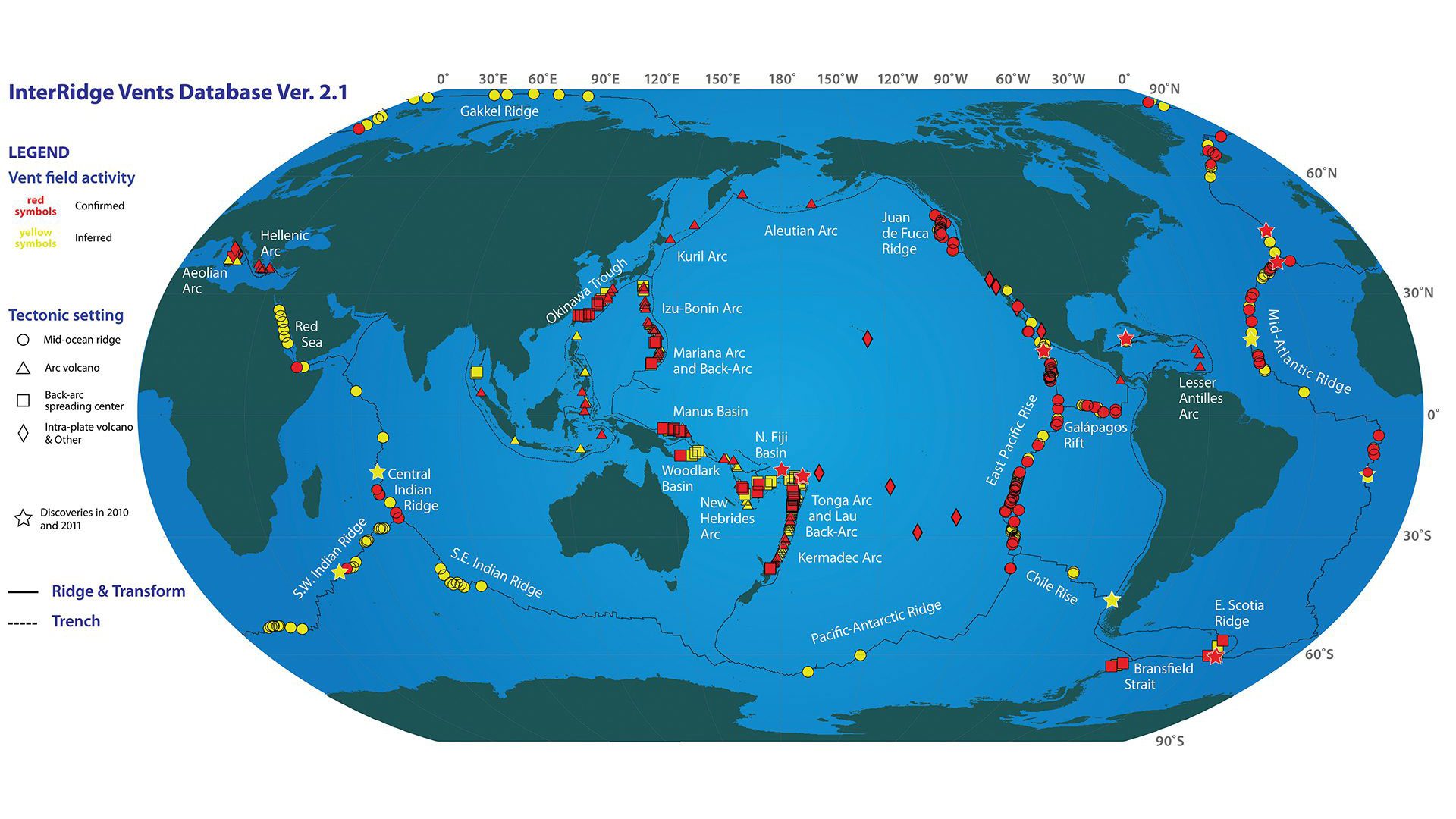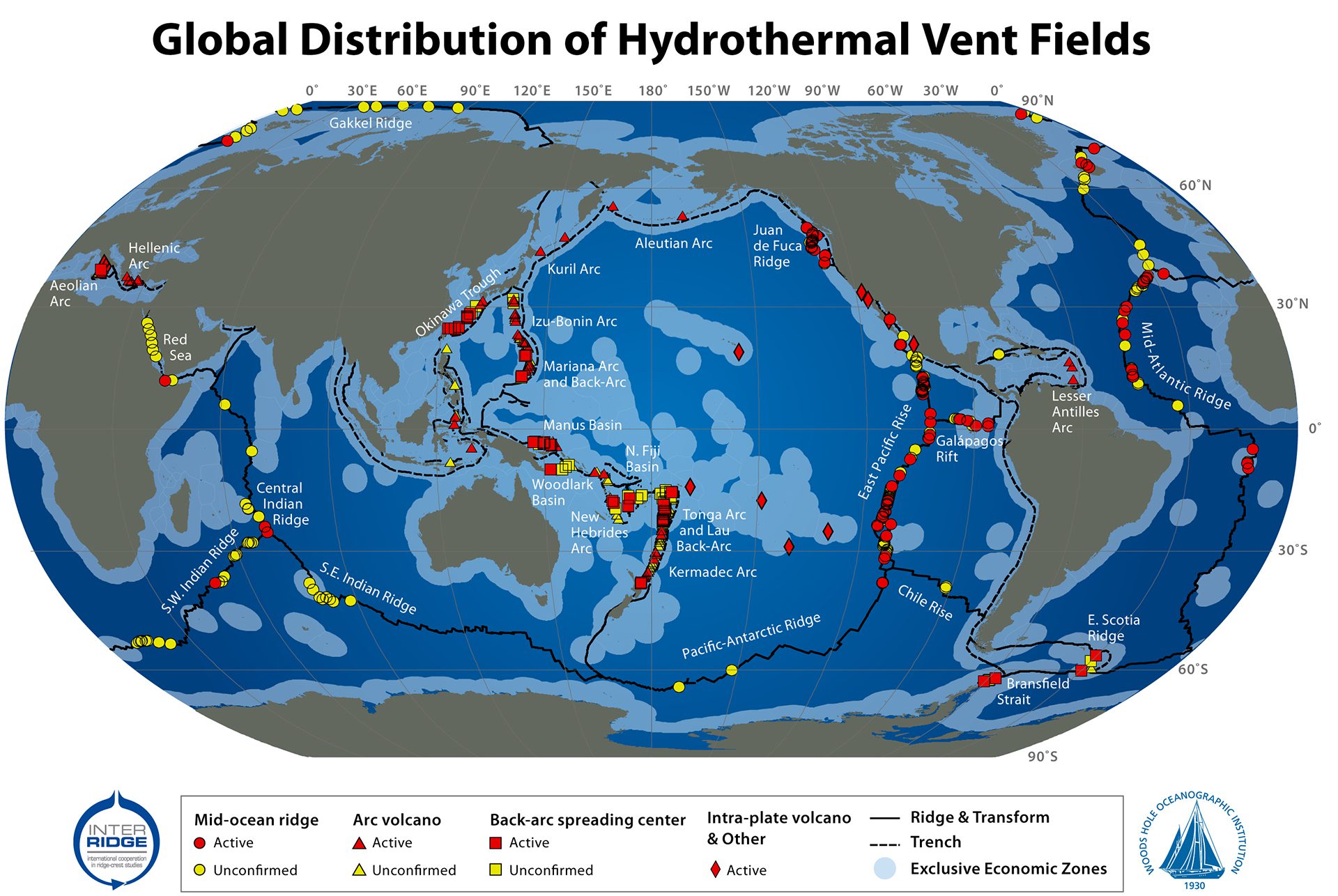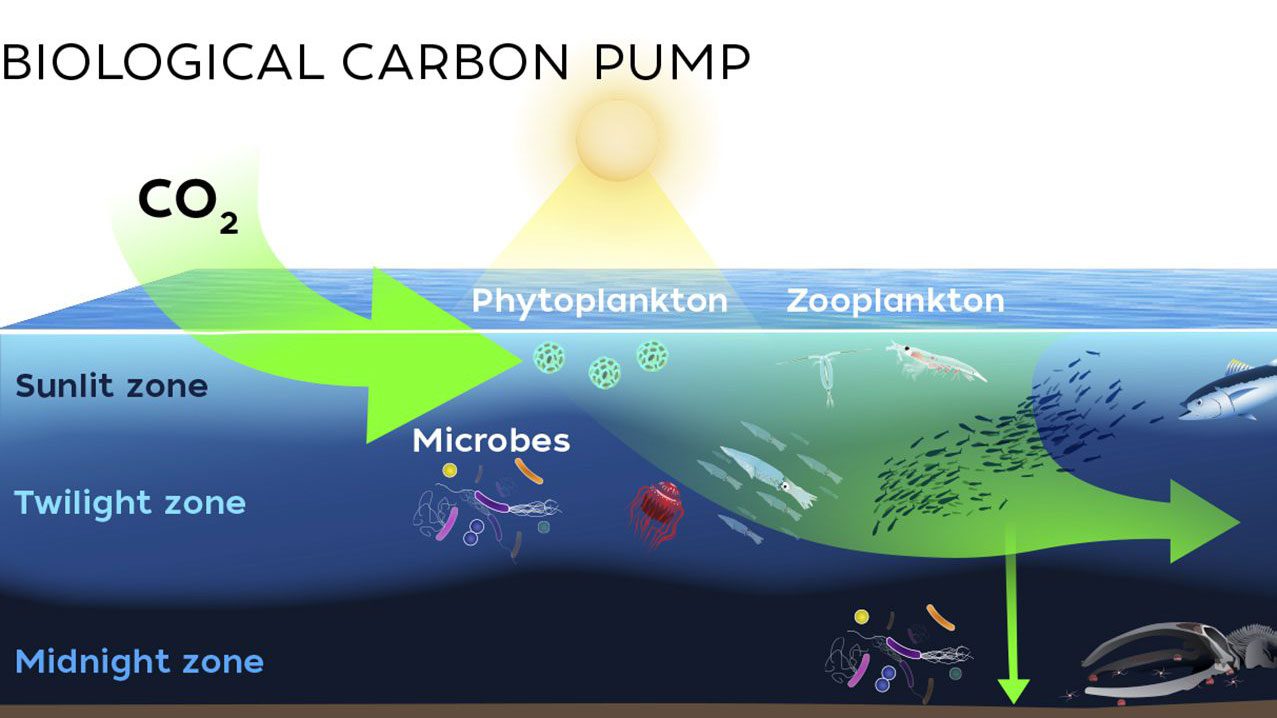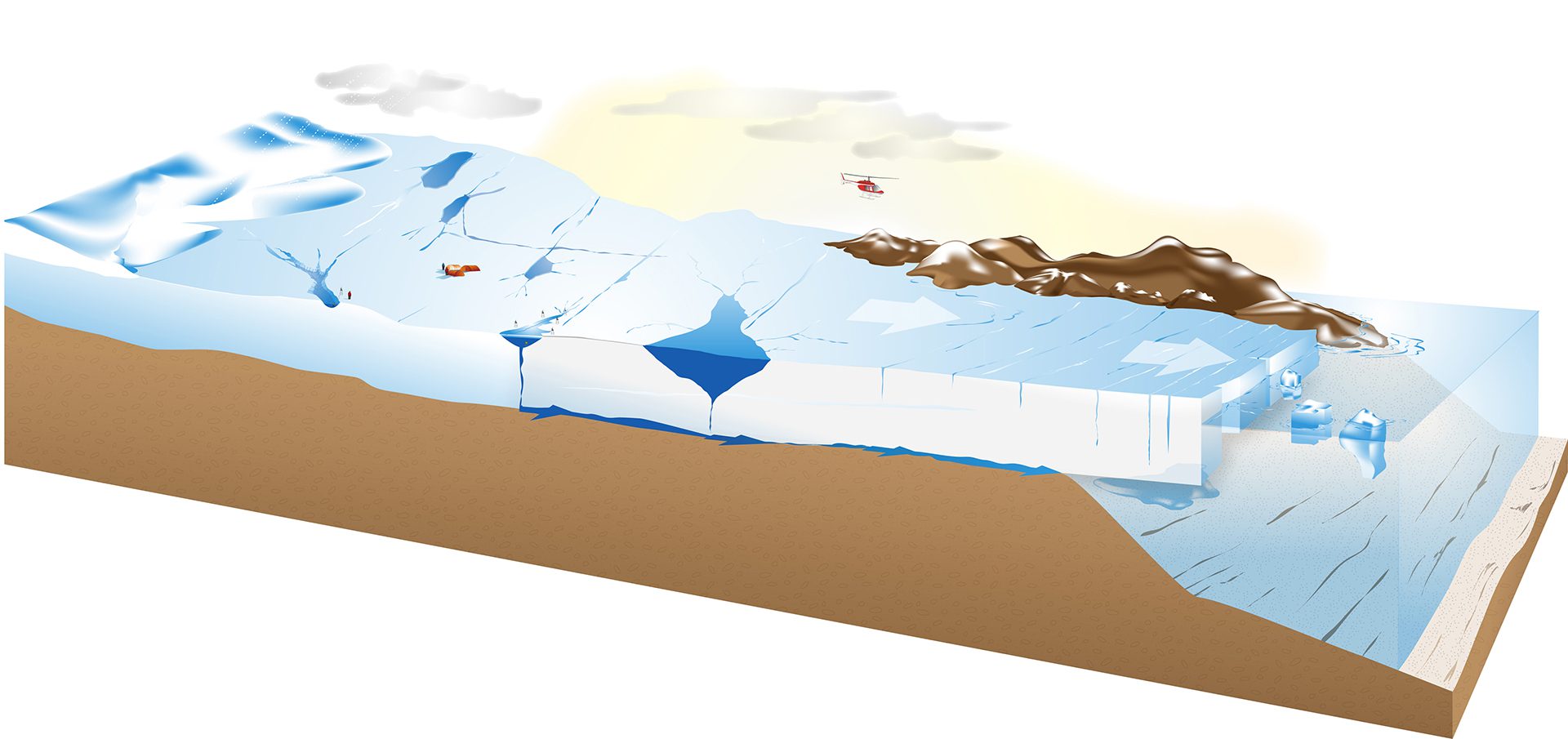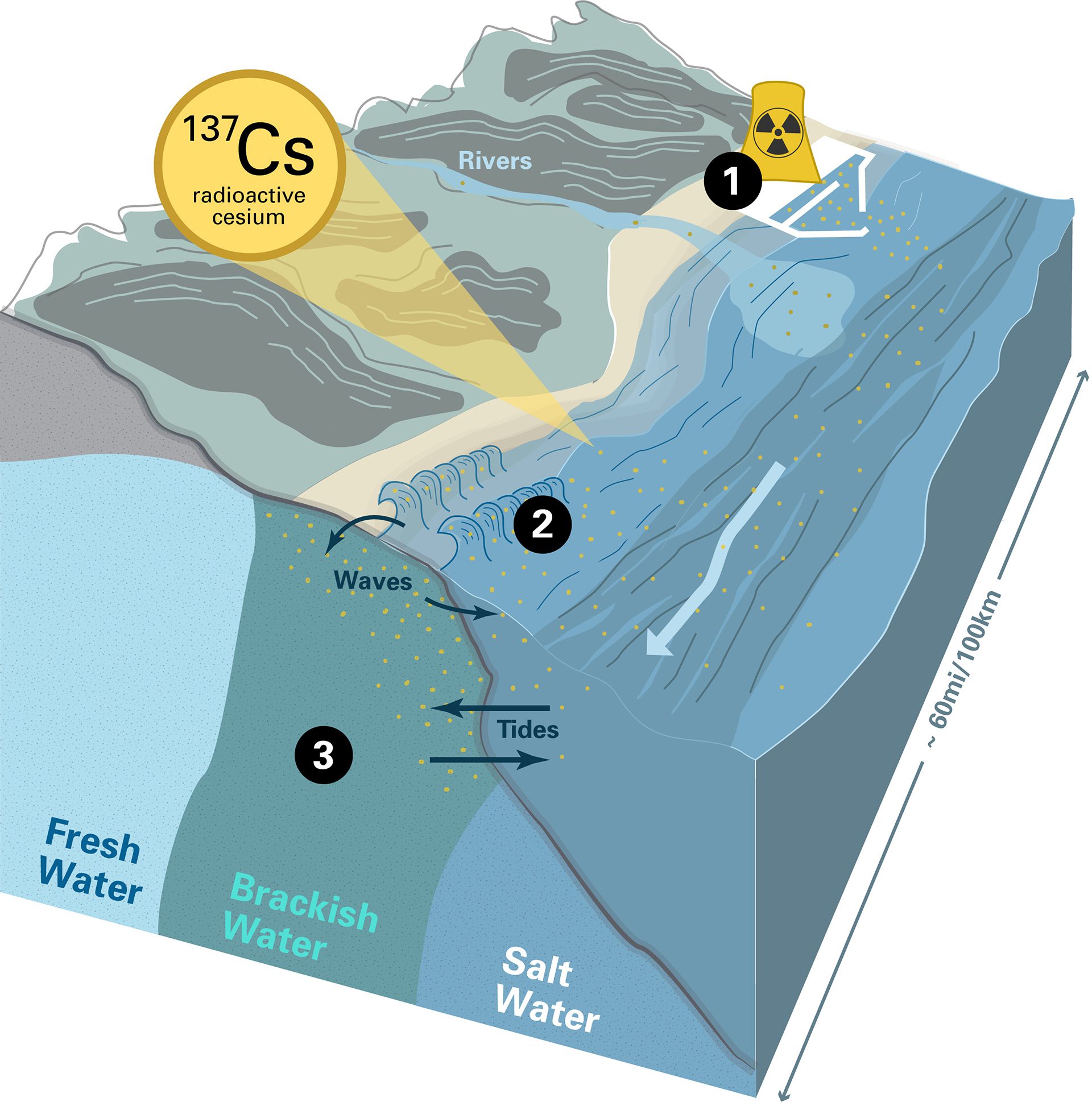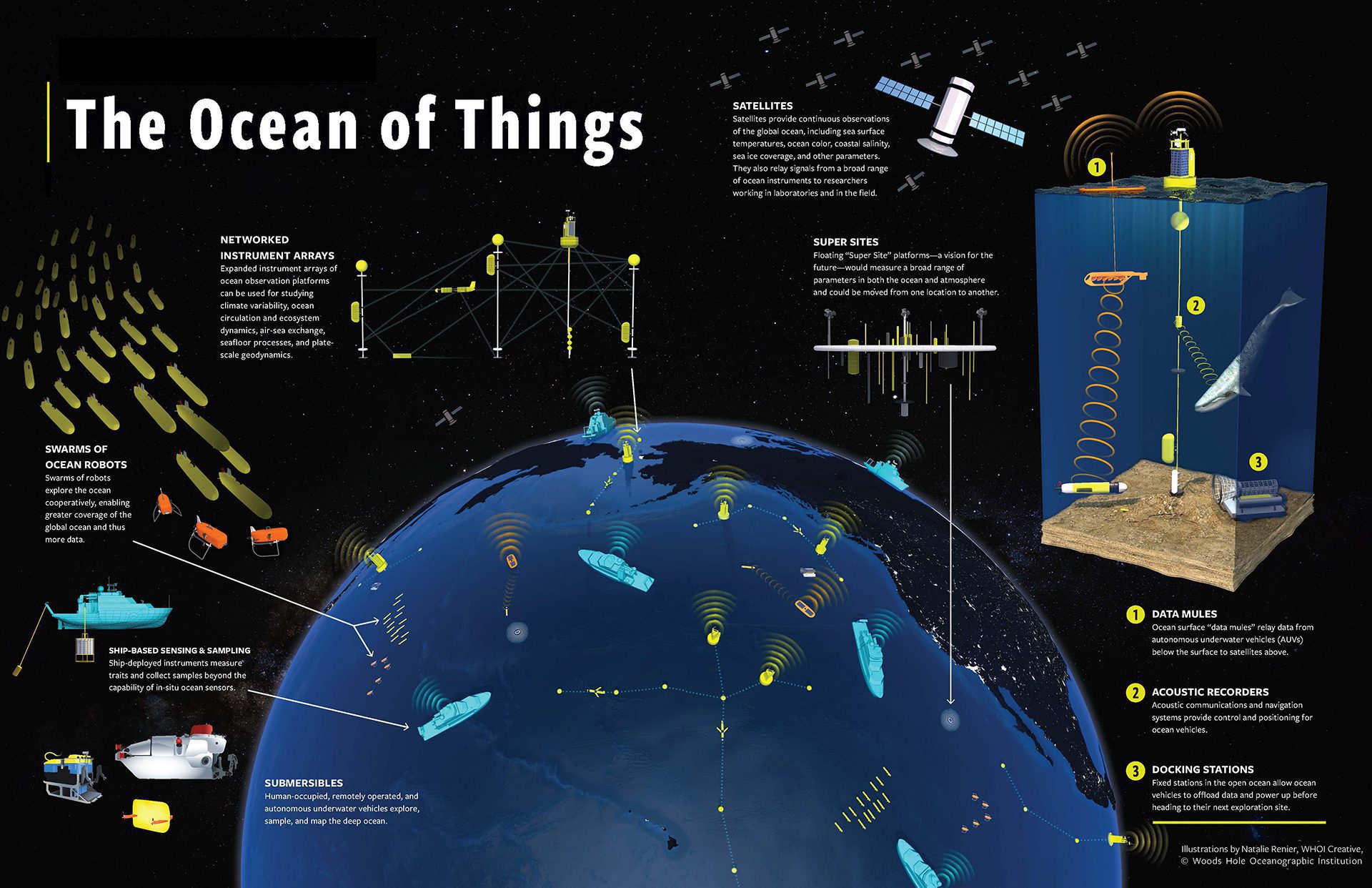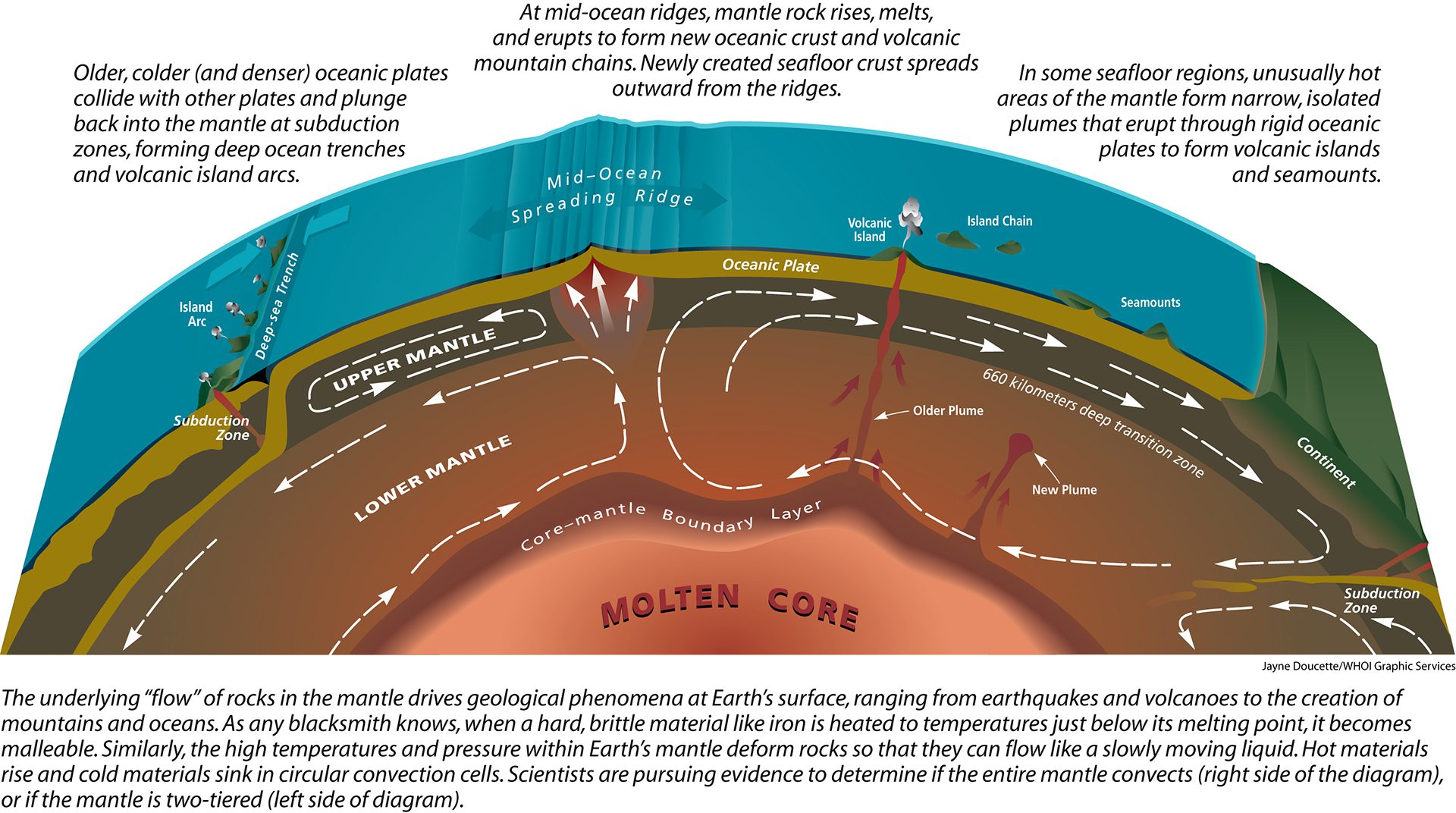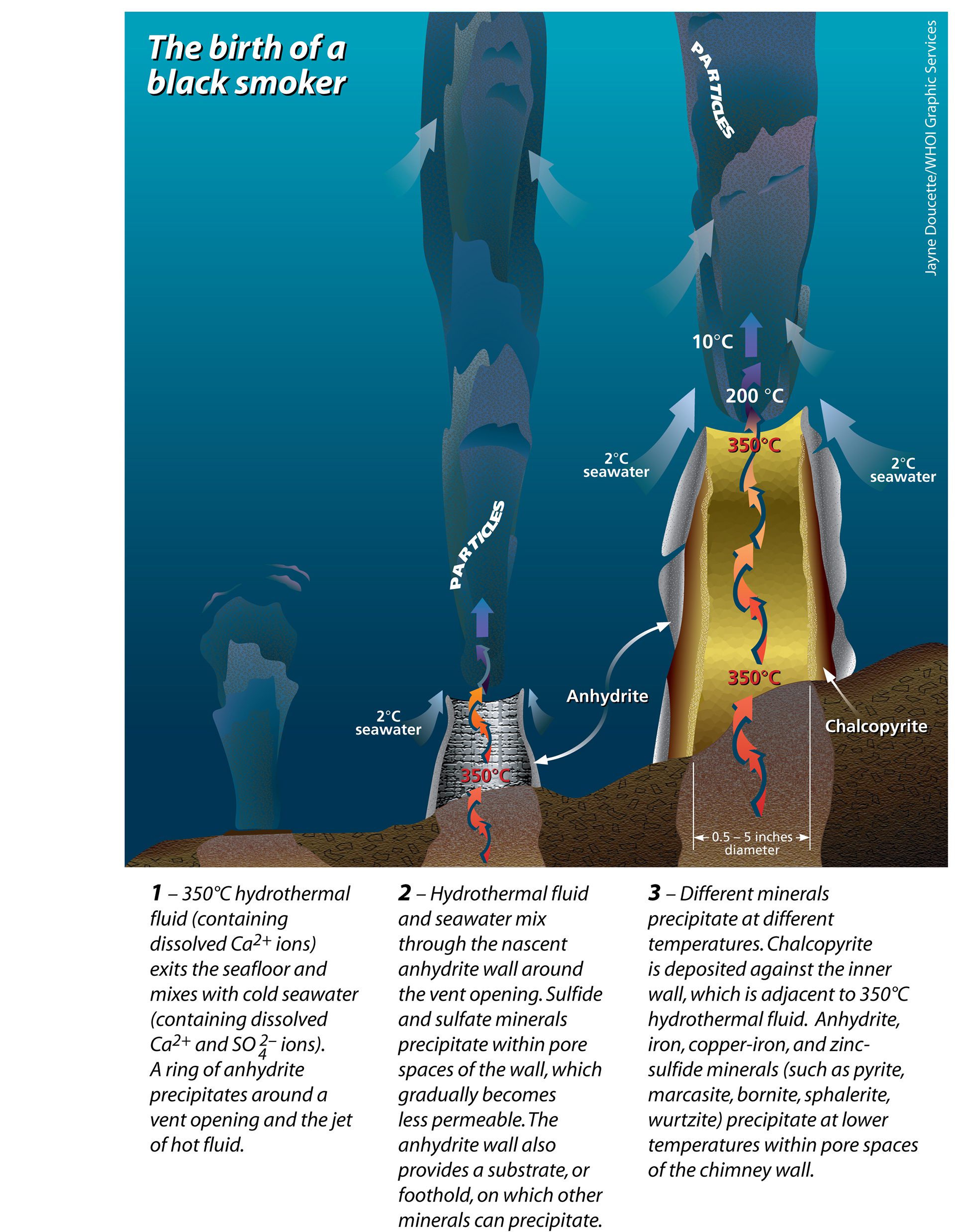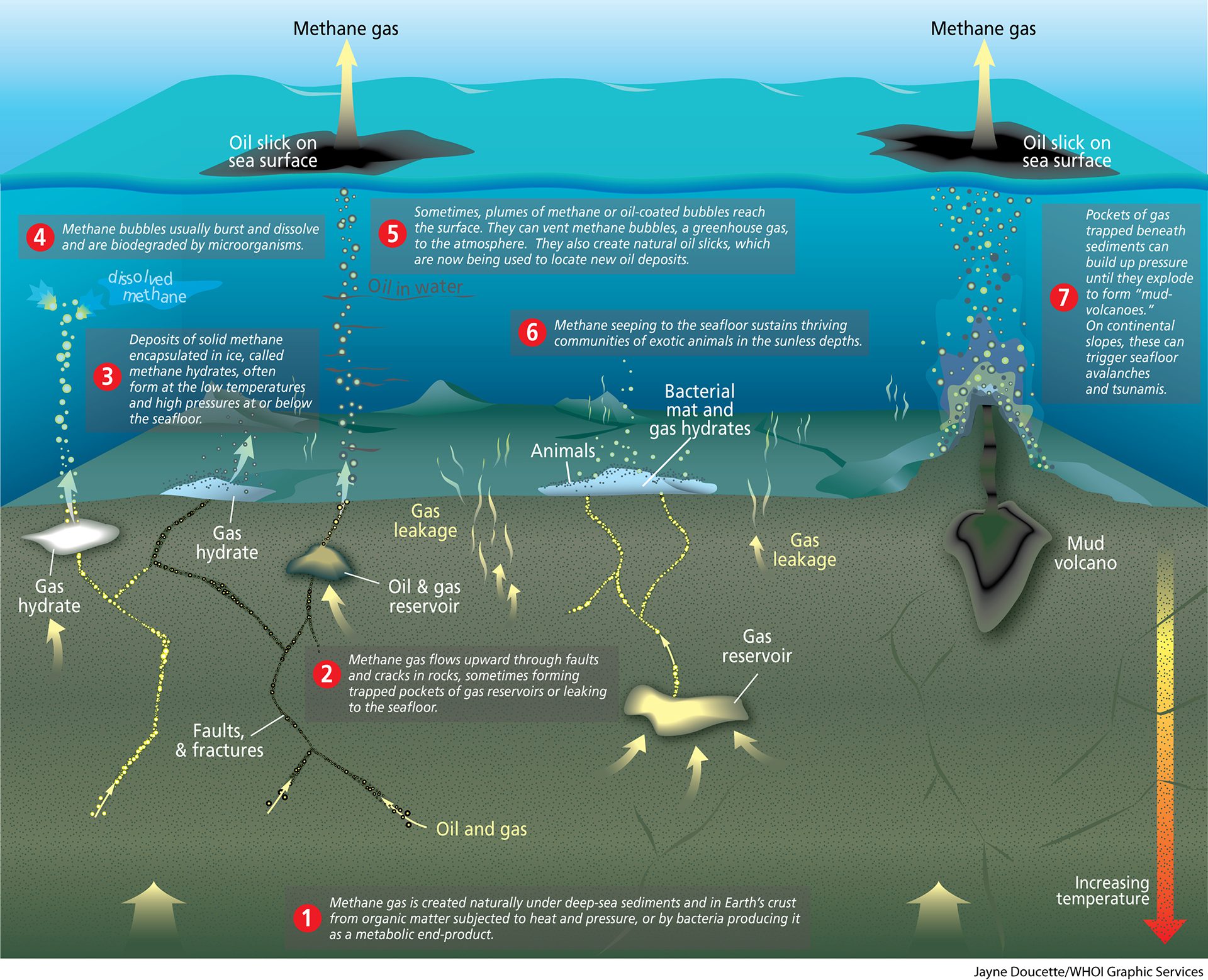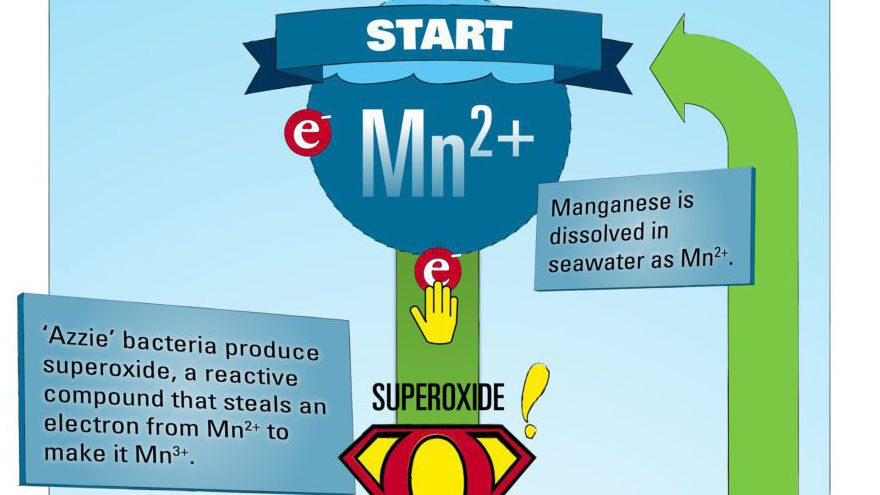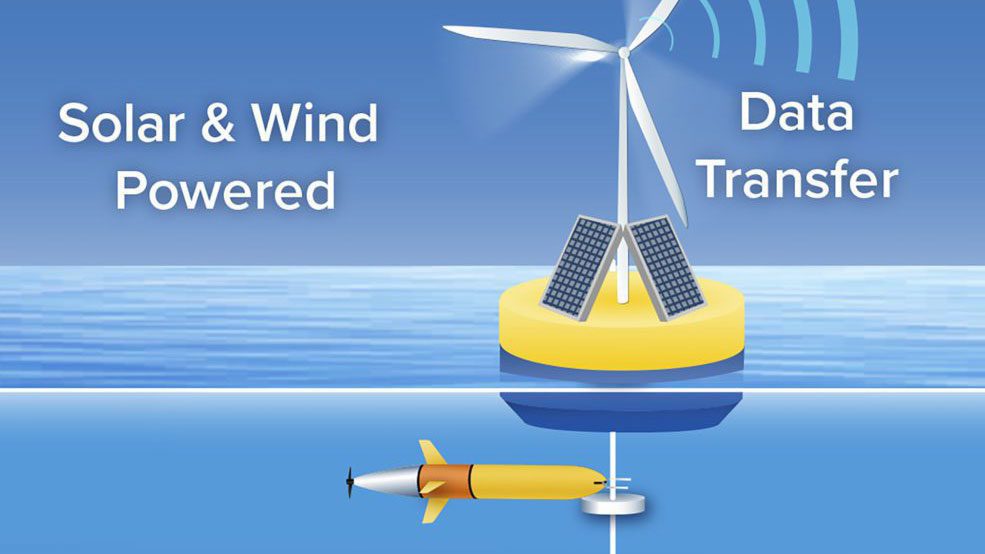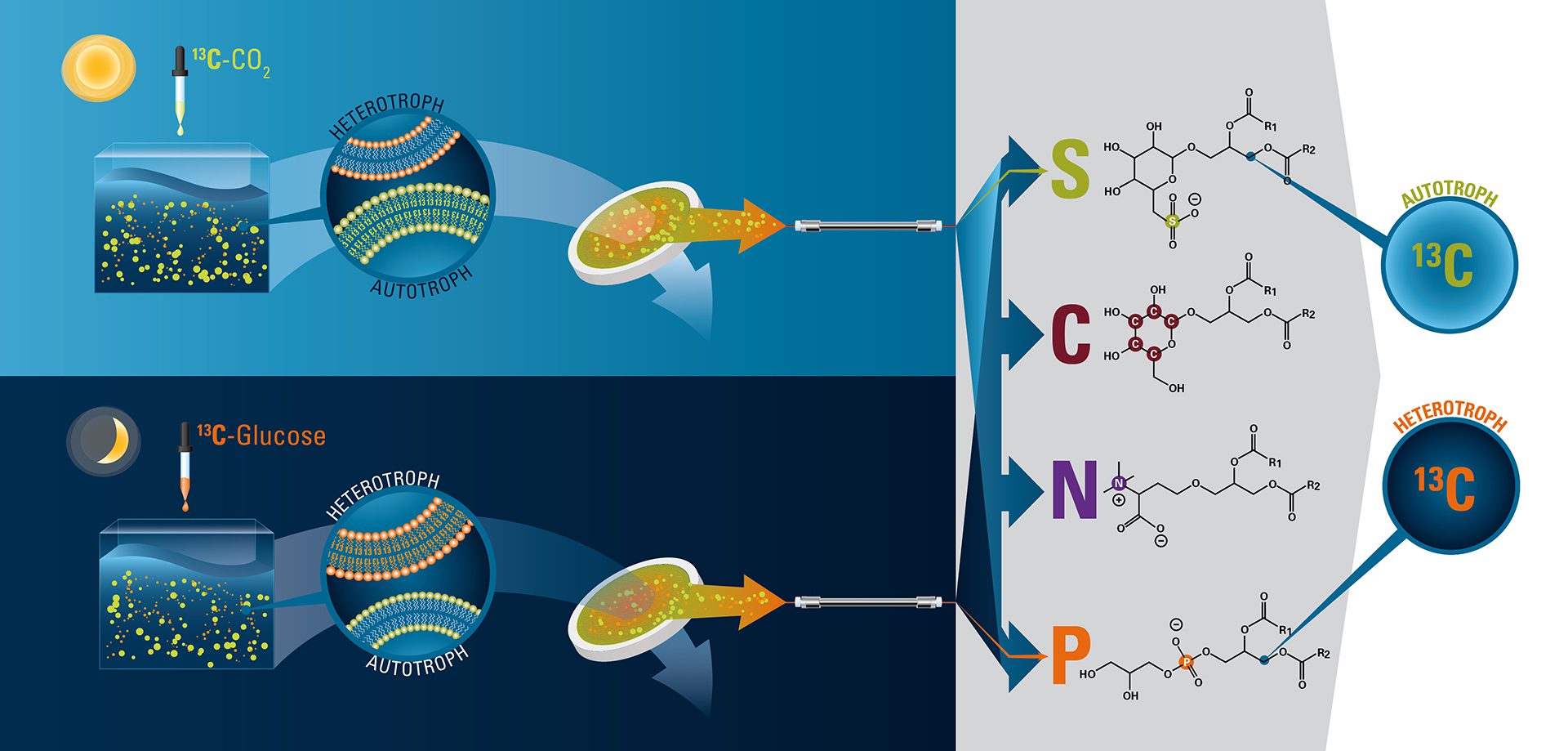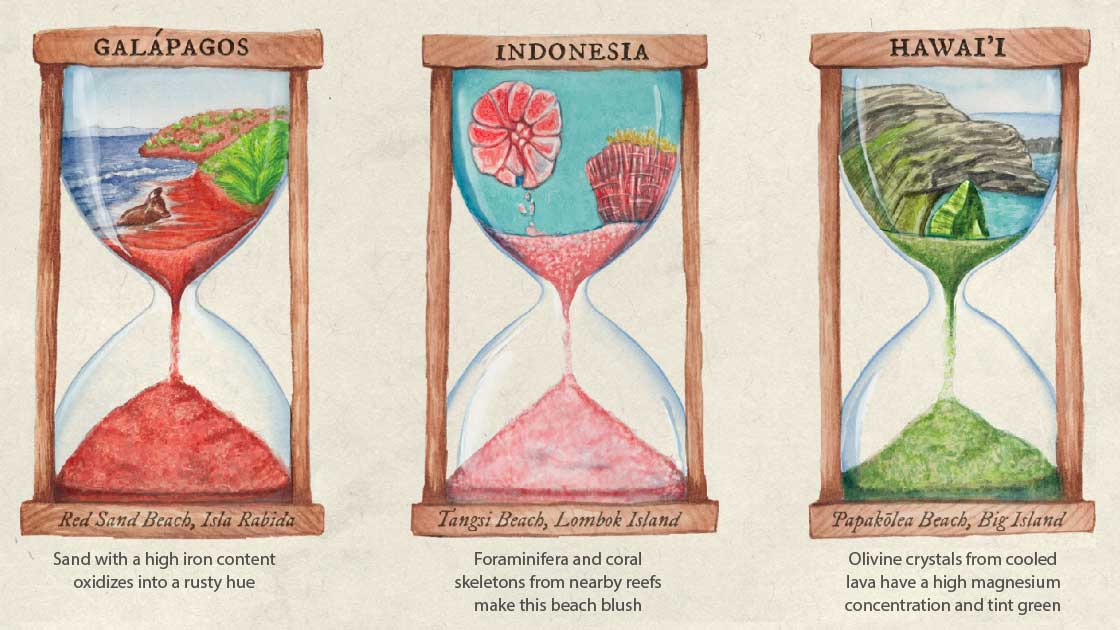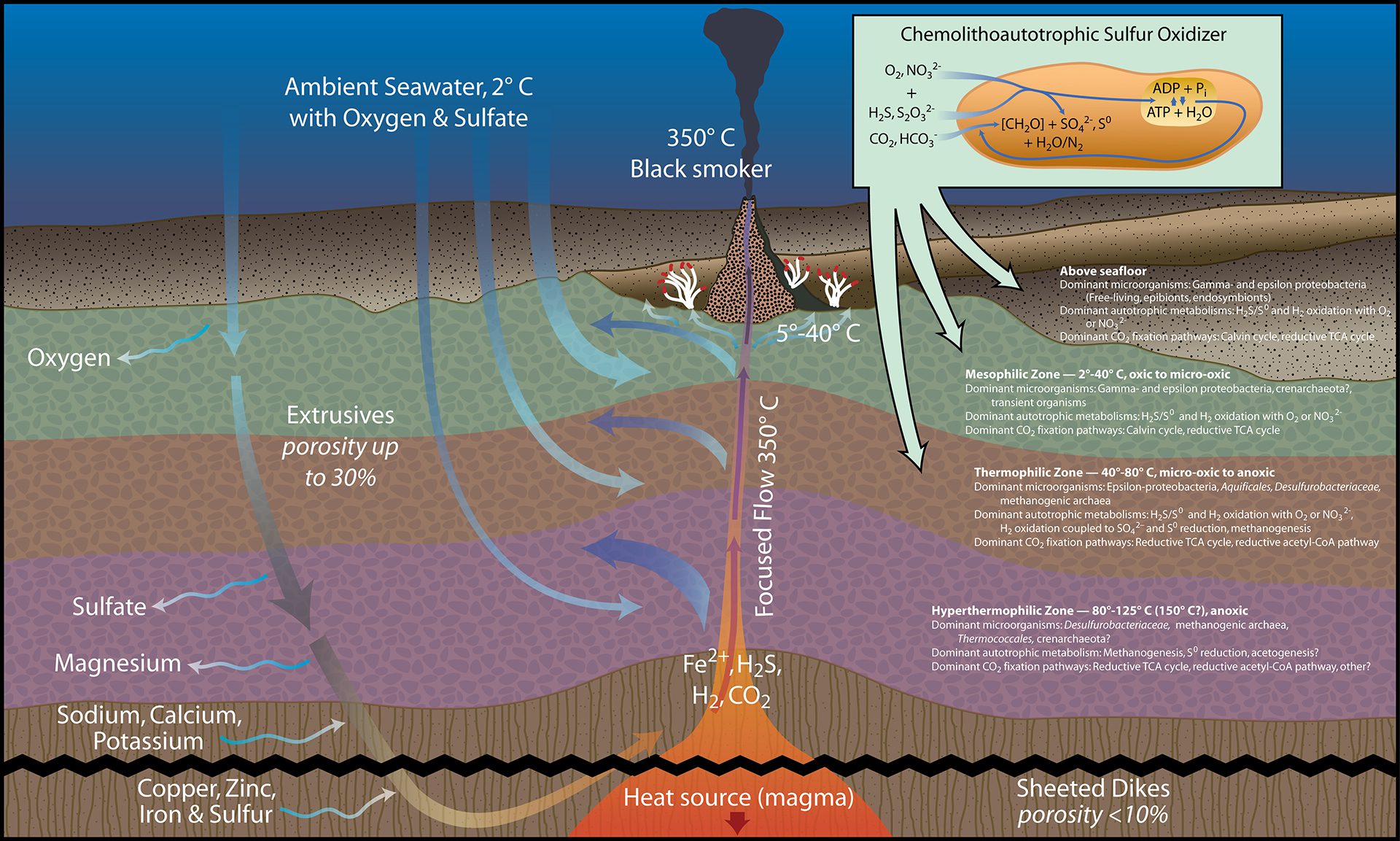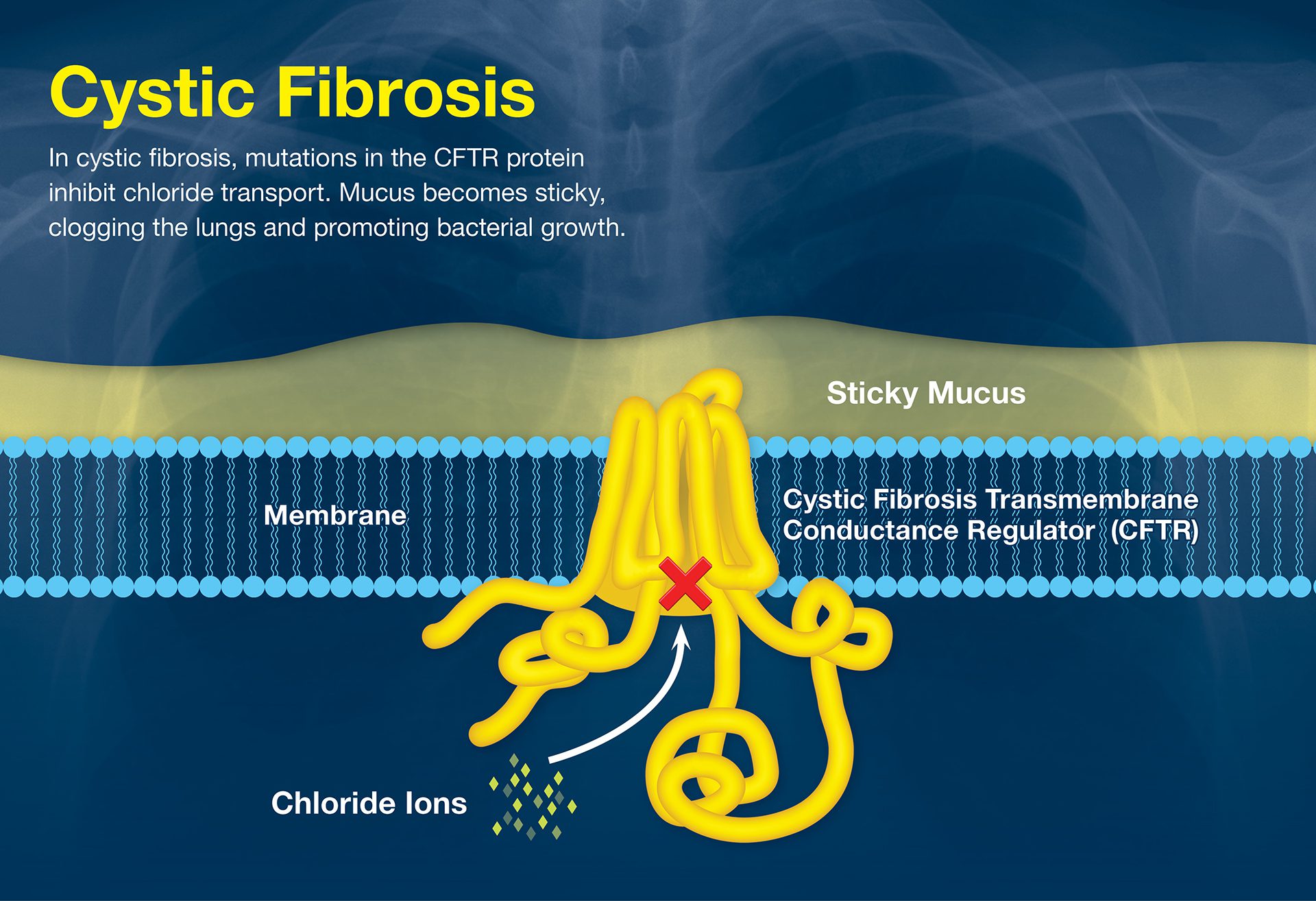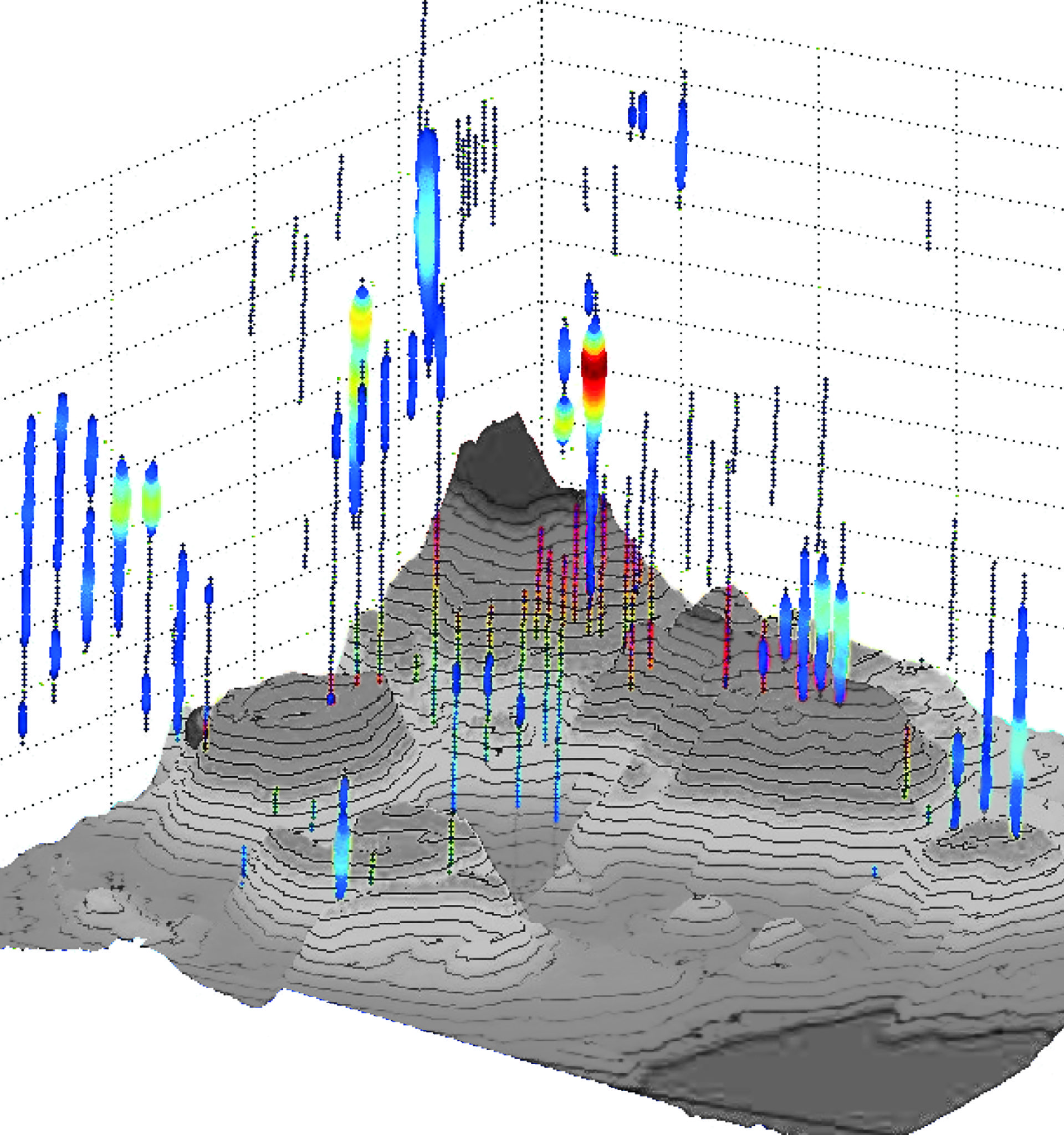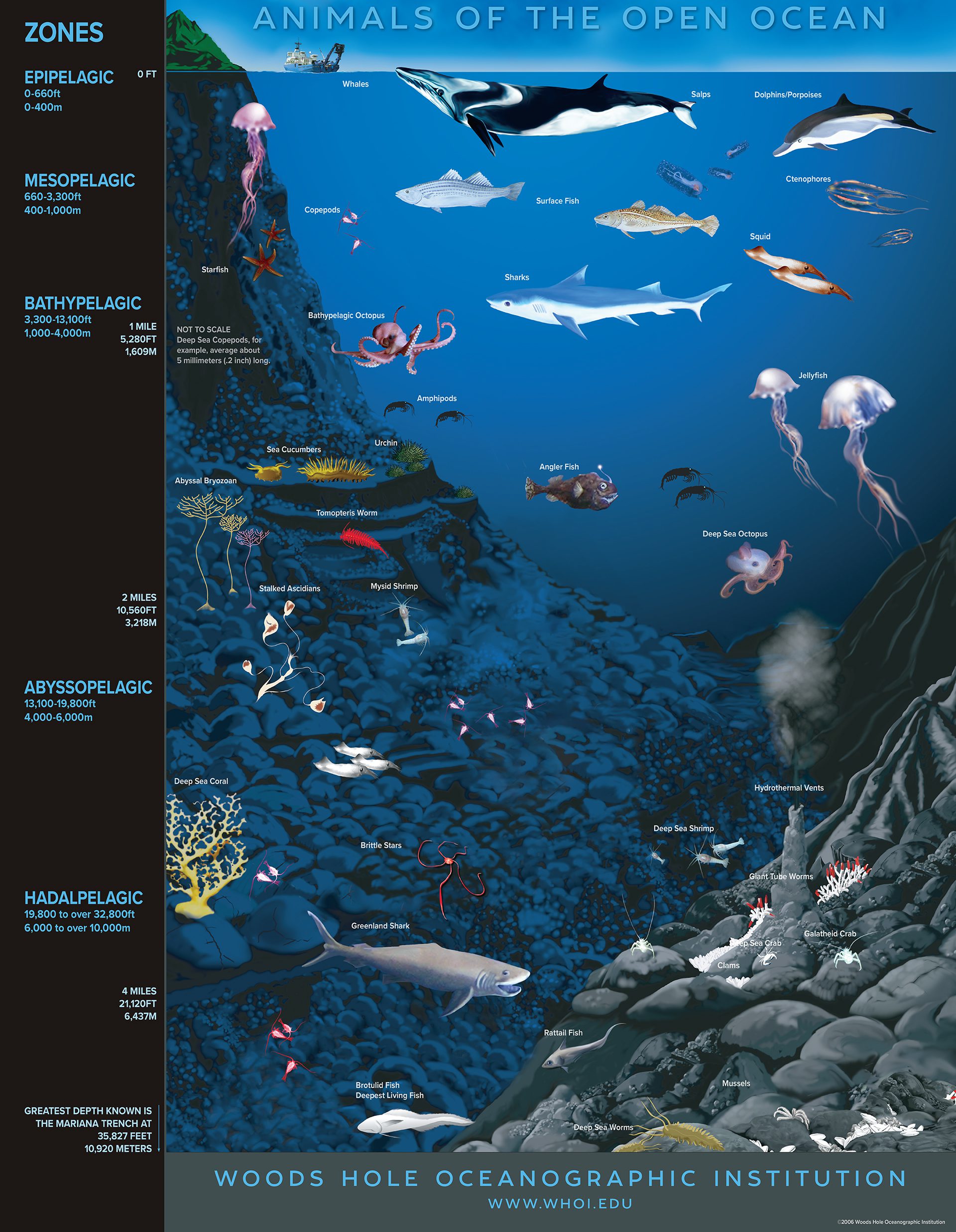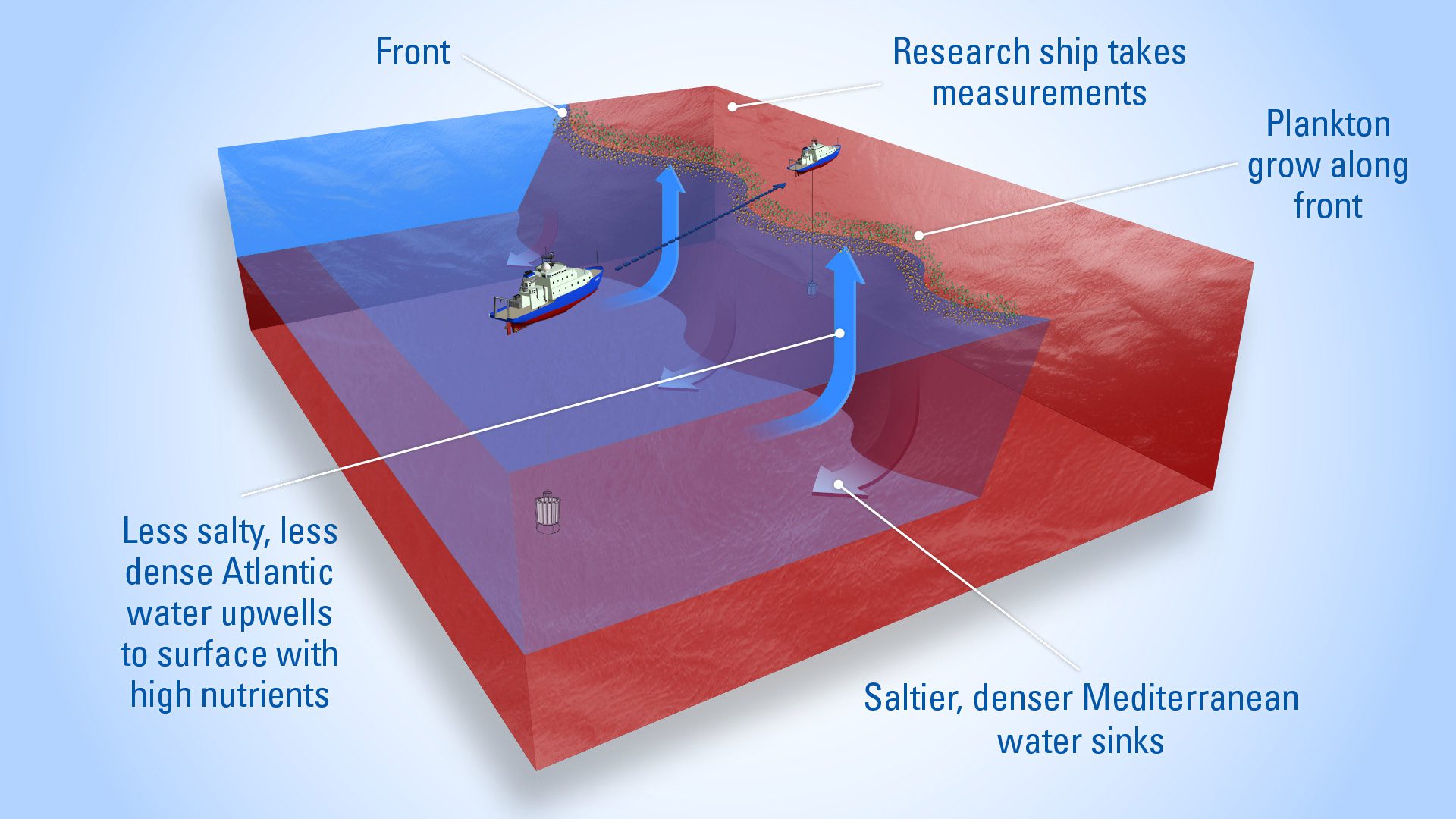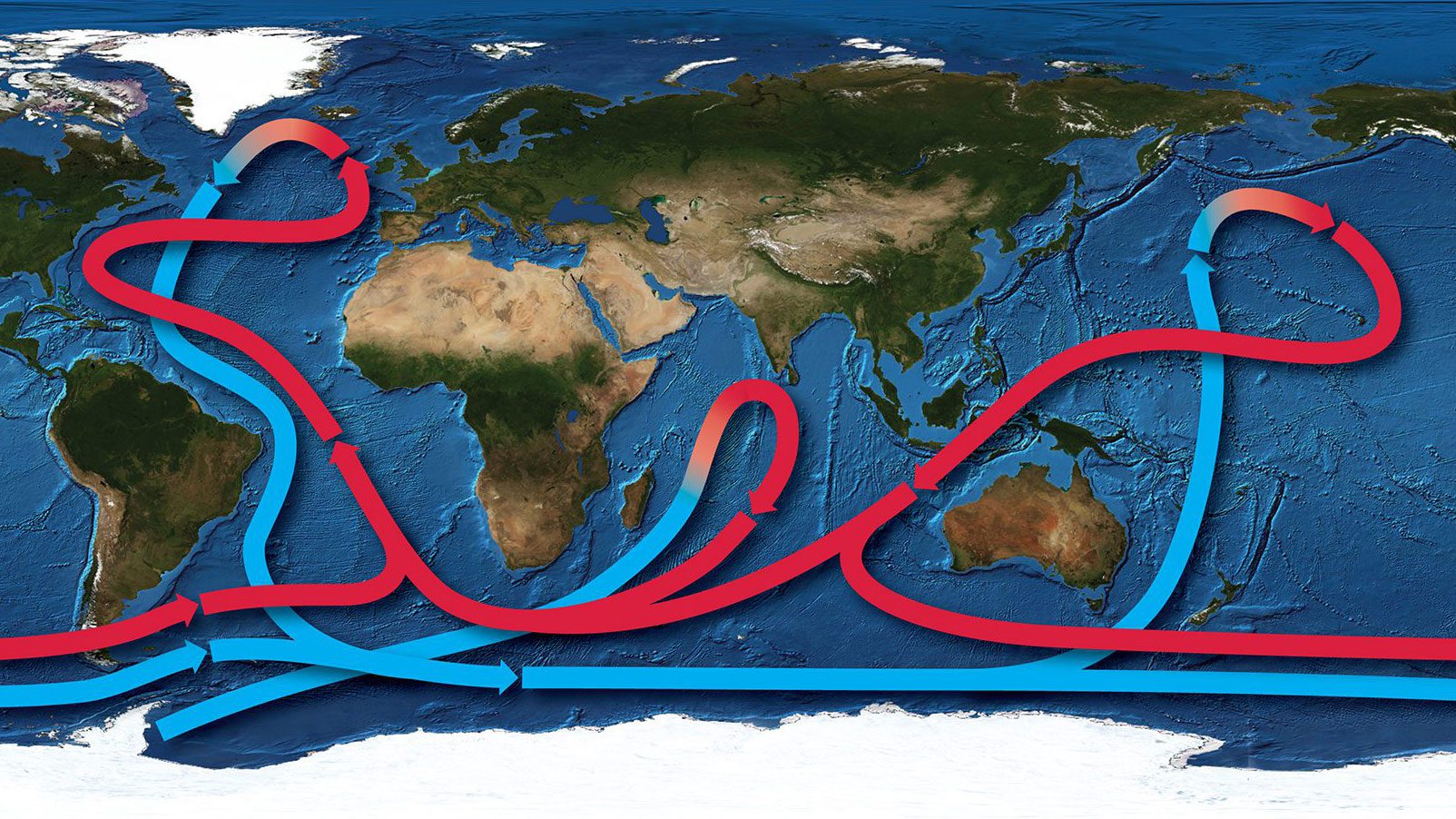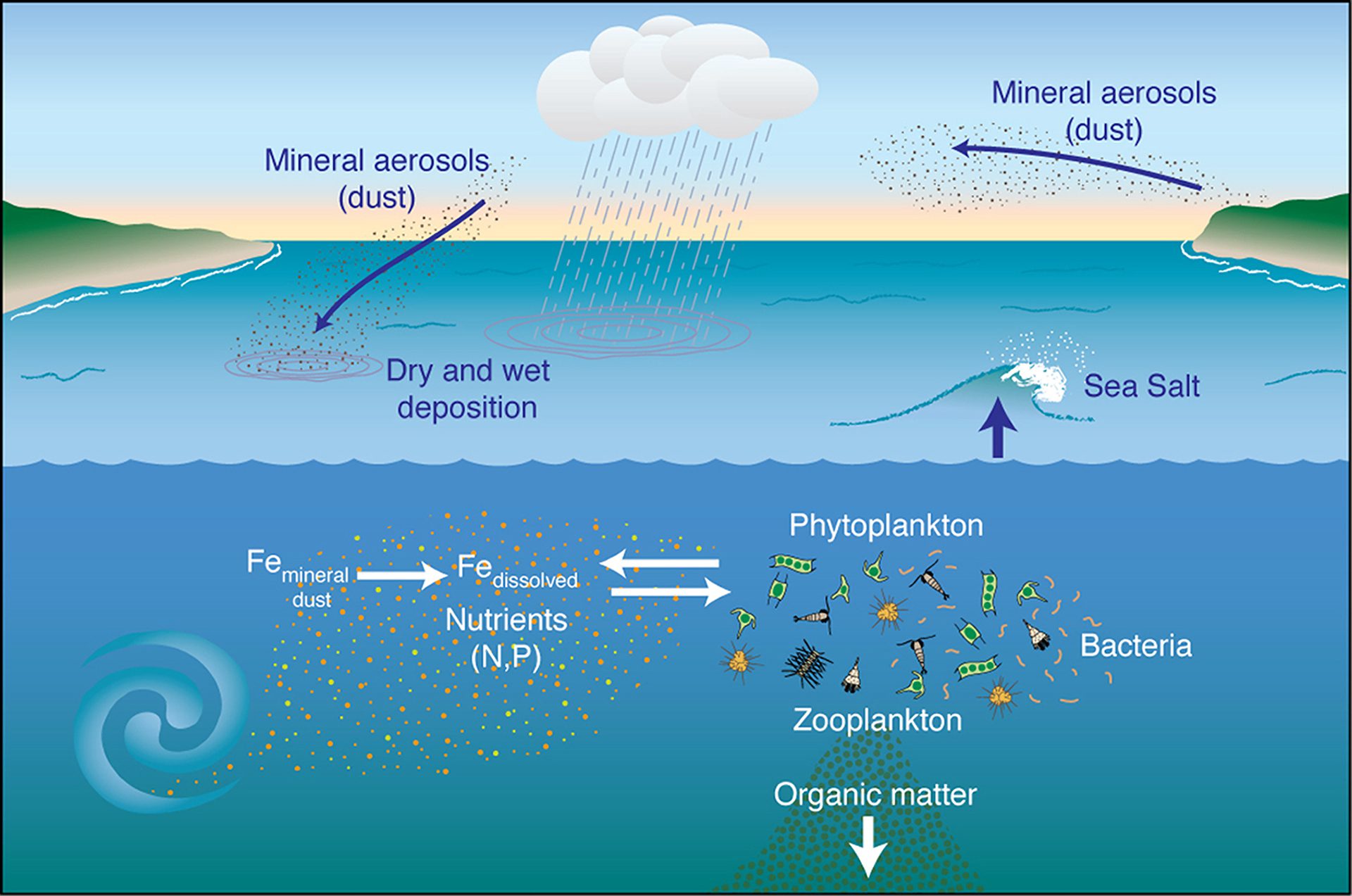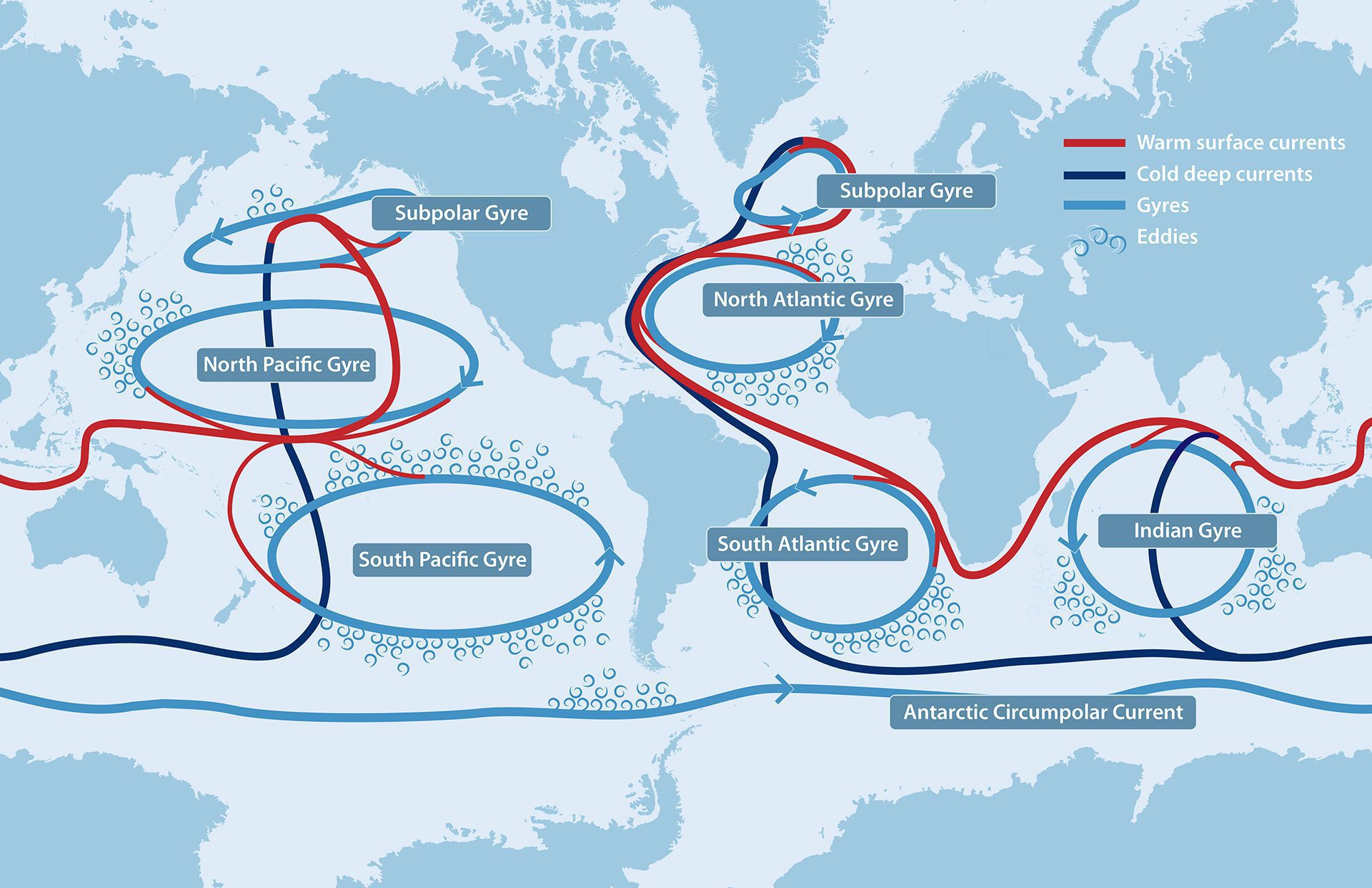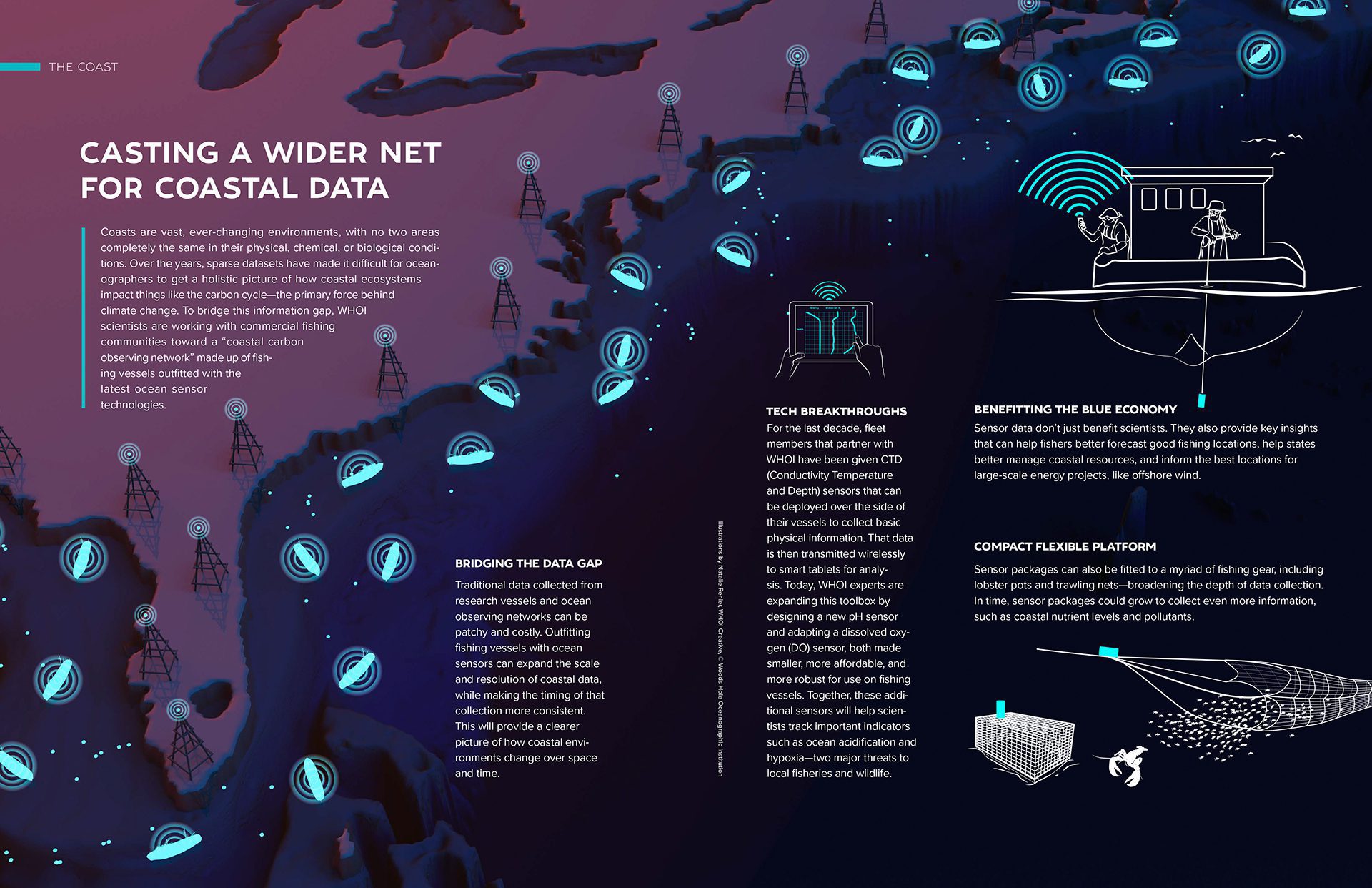Multimedia
2011 global hydrothermal vents
2011 map showing the global distribution of hydrothermal vent locations, either suspected or confirmed.
Read More2009 global hydrothermal vents
2009 map showing the global distribution of hydrothermal vent locations, either suspected or confirmed.
Read MoreBiological Carbon Pump
The ocean’s biological carbon pump moves carbon from surface waters to the deep sea, helping regulate climate by keeping some heat-trapping gases out of the air.
Read MoreMixing layer diagram
Interactions between the ocean and the atmosphere, illustrating how energy and matter are exchanged between these two systems.
Read MoreThe life cycle of Greenland’s meltwater lakes
Meltwater lakes on Greenland’s ice sheet drain to bedrock each spring, potentially speeding ice loss and accelerating global sea level rise.
Read MoreCesium-137 movement from Fukushima in coastal saters
Radioactive cesium from Fukushima was carried by currents, trapped in beach sands, then released back to the ocean as saltwater conditions changed.
Read MoreThe Ocean of Things
The digital ocean ecosystem of the future will rely on a network of underwater vehicles, sensors, and communications systems that will be always on and always connected.
Read MoreIs the mantle one big pot or is it double-decked?
The flow of rocks in the mantle drives geological phenomena like earthquakes and volcanoes. Scientists are studying if the mantle convects as a whole or in layers.
Read MoreThe birth of a black smoker
Black smoker chimneys form as hot vent fluids mix with cold seawater, first building walls of anhydrite, then layering on metal sulfides over time.
Read MoreThe seafloor is teeming with methane
Methane seeping from the seafloor fuels deep-ocean ecosystems where microbes use it for energy, supporting unique animals in dark, sunlight-free habitats through chemosynthesis.
Read MoreTwo Chemical Roads Diverge in an Open Ocean illustration
An exploration of how and why manganese oxide deposits form in the environment
Read MoreTwo subspecies of pilot whales identified
New research reveals that short-finned pilot whales are not one, but two distinct subspecies, changing our understanding of their diversity.
Read MoreUnderwater charging stations positioned along a mooring line
Underwater charging stations, like the one rendered here, could allow ocean robots to run longer-distance missions while reducing the time and costs.
Read MoreDecoding microbes by their lipids
Scientists use lipid chemistry to identify ocean microbes—distinguishing light-powered autotrophs from carbon-processing heterotrophs in seawater samples.
Read MoreLibrary of Sand
Nothing says coastline like sand, that soft edge between land and sea. Sand takes millions of years to form, created as nearby rock weathers into fine grains.
Read MoreLife and chemistry at deep-sea hydrothermal vents
Hydrothermal vents host extreme microbes that drive key chemical cycles—oxidizing sulfur, fixing CO?, and producing methane in a hot, mineral-rich environment.
Read MoreCystic fibrosis
Cystic fibrosis impairs lung function due to a faulty protein. WHOI scientists seek marine molecules that might help restore normal function.
Read MoreHunting hydrothermal plumes with a CTD Tow-Yo
Oceanographers use a CTD—an instrument towed through deep water—to detect hydrothermal plumes by sensing heat, minerals, and chemicals below the surface.
Read MoreAnimals of the open ocean
A cross-section of the ocean, showcasing various marine life at different depths, from the sunlit surface to the dark abyssal plains.
Read MorePlankton blooms at ocean fronts
Plankton thrive where water masses meet—rising lighter water brings nutrients to the surface, fueling blooms in sunlit layers of the ocean.
Read MoreGlobal thermohaline circulation
Map with bathymetry and generalized ocean currents driven by temperature and density differences, forming the global ocean conveyor belt.
Read MoreDust distribution across the ocean
Iron-rich dust from land settles in the ocean, feeding phytoplankton. These support marine life and help transfer carbon to the deep sea through sinking matter.
Read MoreOcean circulation roadmap
Illustrated roadmap of global ocean circulation, with temperature and flow shown as highways connecting gyre “roundabouts” across the world’s oceans.
Read MoreScope and benefits of a "Coastal Carbon Observing Network"
WHOI scientists are working with fishing communities toward a coastal carbon observing network made up of fishing vessels with the latest ocean technologies.
Read More
